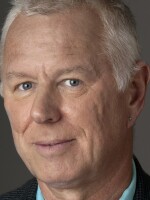STEVE INSKEEP, host:
It's the first day of Hurricane Season 2006. And on this day, we are sorry to report that parts of New Orleans are sinking faster than anyone realized. Scientists have known for a long time that the city is slowly sinking; that's one reason that so much of it is below sea level. Scientists have been studying images of the city taken by a special kind of radar. And they say the rapid sagging may be one reason some of the levees failed to protect parts of the city last year. NPR's Christopher Joyce has more.
CHRISTOPHER JOYCE reporting:
Much of New Orleans is built on the geological equivalent of a down pillow: Mississippi River sediment. As that sediment dries and collapses it settles, and the city is settling with it.
About 50 years ago, scientists started measuring how much New Orleans was sinking. On average, the rate was about a fifth of an inch a year. Now, there's a new technique to measure sinking. It's a type of radar flown on a satellite.
Timothy Dixon, a geologist at the University of Miami, examined images of some 150,000 spots in the New Orleans metropolitan area. The average settling, or subsidence, was about the same as it was measured on land - about six millimeters a year. But in some places, along some levees, for instance, it was a lot worse.
Professor TIMOTHY DIXON (Director, Geodesy Lab, University of Miami): What we found was that some of the levees that failed in Katrina had extremely high rates of subsidence. That's a new finding. That had not been observed before with the leveling data, because they didn't run leveling lines on the levees.
JOYCE: Leveling lines are measurements much like those engineers make when they build roads or buildings. Dixon's satellite measurements - described in the scientific journal, Nature - are more detailed and cover more area. They showed that the levees along a navigation channel east of the city, known as the Mississippi River Gulf Outlet, sank at five-times the average rate for the rest of the city.
Prof. DIXON: Our data suggests that with the subsidence rates we're seeing, the levees were probably a little bit lower than what they were originally designed for. And so that obviously contributes to them being overtopped.
JOYCE: Officials at the U.S. Army Corps of Engineers say that after Katrina, they did discover that some levees were not actually as high as they were designed to be. Dixon and his scientific team say it's not just the levees that are sinking faster than realized, though. For example, the nearby community of Kenner, which is built on wetlands that have been drained, is sinking about three-times faster than the rest of the city.
Virginia Burkett is the scientist at the U.S. Geological Survey who has analyzed the ground-based measurement of subsidence. She found quite a bit of variation around the city, as well; though, not as much as Dixon did. But she says she's not surprised at the high numbers in some places.
Dr. VIRGINIA BURKETT (Chief, Forest Ecology Branch, National Wetlands Research Center, U.S. Geological Survey): For example, where we have artificial fill, the subsidence rates are much more rapid than they are on the natural levee deposits. So there's a lot of variability.
JOYCE: Artificial fill is sediment or other material dredged up and shipped in. Natural deposits were laid down over centuries by river flooding. Burkett and Dixon both say they are puzzled by one thing: Over time, as soils get dried out and compacted, the rate of sinking should slow down; but, instead, it speeds up and slows down unpredictably.
Dr. BURKETT: It's not a linear relationship. Through time, you'll see these episodes of subsidence, and it doesn't appear to be decreasing through time.
JOYCE: An engineer with the Army Corps, Al Naomi, says the corps is familiar with varying rates of subsidence and with Dixon's latest findings. He says the corps usually designs levees based on soil conditions they measure at each individual site, rather than on subsidence averages; and that if settling rates are unusually high, levee builders can just build higher.
Christopher Joyce, NPR News. Transcript provided by NPR, Copyright NPR.


